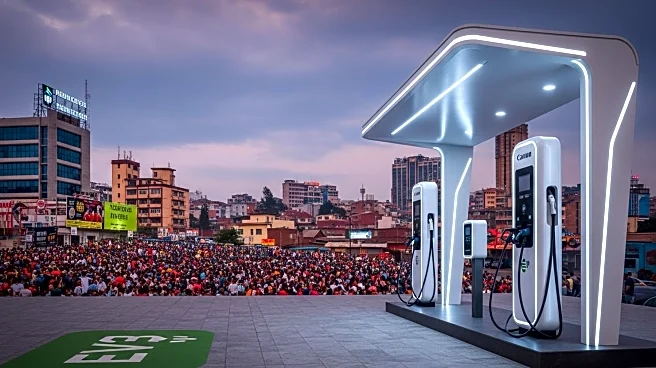What's Happening?
Kenya's automotive sector has experienced significant growth in the first half of 2025, with 6,723 vehicle units assembled, marking a 16.4% increase from the previous year. This growth is attributed to new government incentives, including tariff exemptions for imported parts, aimed at attracting foreign investment. Japan has committed to providing up to 25 billion yen in financing to support Kenya's vehicle assembly and energy sectors. The sector's recovery is further supported by local production initiatives, such as CFAO Motors' plan to produce Toyota Fortuner vehicles locally, creating 600 jobs. Additionally, partnerships with Germany have brought Volkswagen models back to local assembly.
Why It's Important?
The growth in Kenya's automotive sector is crucial for the country's economic development, as it strengthens local manufacturing capabilities and creates job opportunities. The focus on electric vehicle assembly aligns with global trends towards sustainable transportation, potentially positioning Kenya as a leader in green mobility in Africa. The government's incentives and international partnerships are likely to attract more foreign investment, boosting the economy and enhancing technological transfer. This development could also reduce electricity transmission losses, improving overall energy efficiency in the country.
What's Next?
Kenya's automotive sector is expected to continue its upward trajectory, with further investments and partnerships likely to be announced. The government's policies may lead to increased foreign interest, potentially expanding the range of vehicles produced locally. As the sector grows, there may be a push for more sustainable practices and technologies, aligning with global environmental goals. Stakeholders, including political leaders and industry players, will likely monitor the sector's progress and adjust strategies to maximize benefits.














